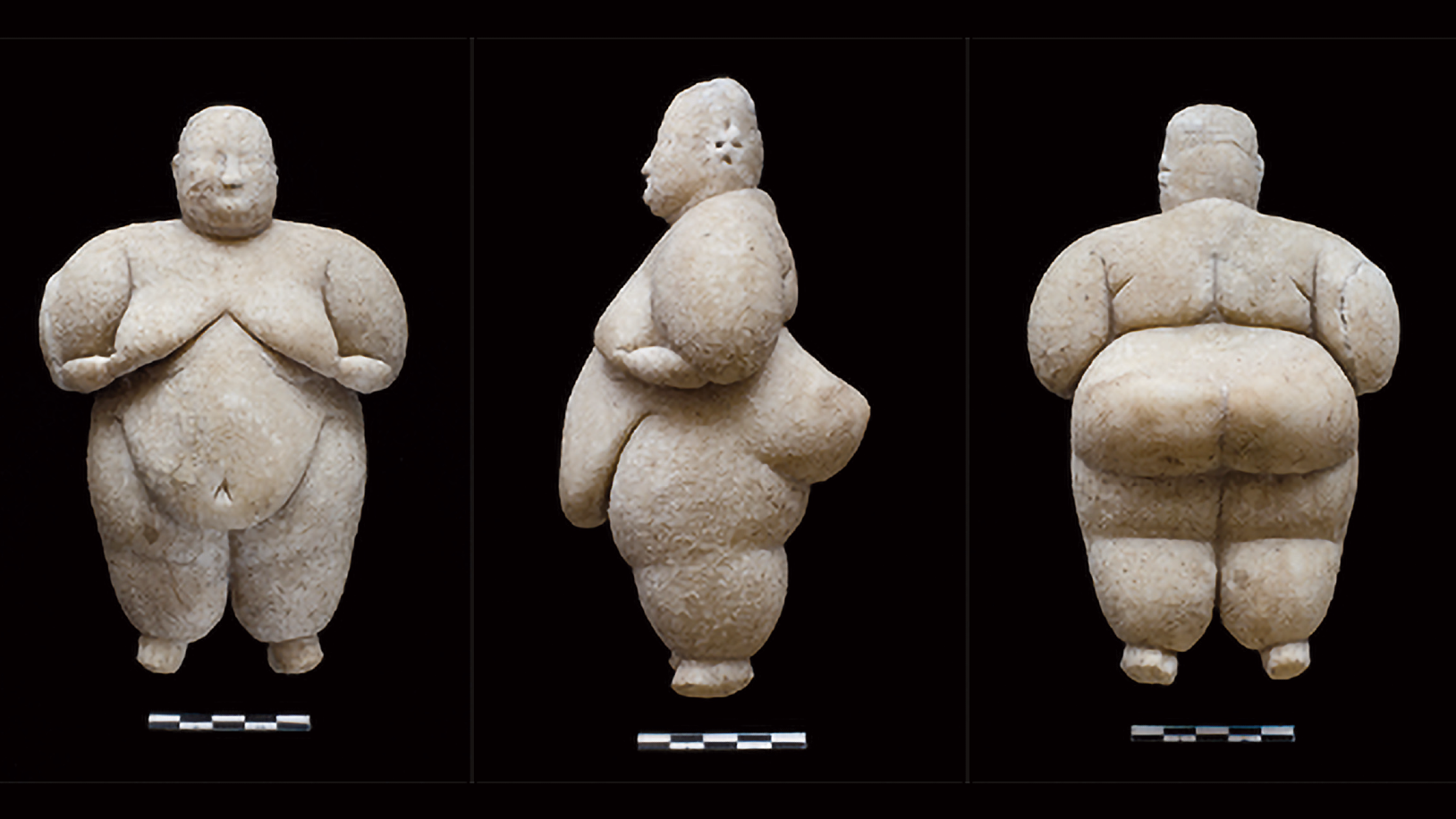Ancient DNA from Stone Age burials in Turkey has finally put to rest a decades-long debate about whether the 9,000-year-old proto-city of Çatalhöyük was a matriarchal society. The research finally confirms what experts have long suspected: Women and girls were key figures in this agricultural society.
“With Çatalhöyük, we now have the oldest genetically-inferred social organisation pattern in food-producing societies,” study co-author Mehmet Somel, an evolutionary geneticist at Middle East Technical University in Turkey, told Live Science in an email. “Which turns out to be female-centered.”
The new research was published Thursday (June 26) in the journal Science.
Located in south-central Turkey, Çatalhöyük was built around 7100 B.C. and was occupied for nearly 1,000 years. The vast settlement — spread over 32.5 acres (13.2 hectares) — is known for its houses that were entered from the roofs, burials beneath the house floors, and elaborate symbolism that included vivid murals and a diverse array of female figurines.
When archaeologist James Mellaart first excavated Çatalhöyük in the early 1960s, he interpreted the numerous female figurines as evidence of a matriarchal society that practiced “mother goddess” worship, perhaps as a way of ensuring a good harvest following a major economic transition from foraging to cereal-based agriculture.
In the 1990s, Stanford archaeologist Ian Hodder took over excavations at Çatalhöyük, and his research suggested instead that the society was largely egalitarian, without meaningful social or economic differences between men and women.
Related: Rare, neolithic ‘goddess’ figurine discovered in Turkey
To further investigate the social organization at Çatalhöyük, in a new study, a team of researchers that included both Somel and Hodder analyzed the DNA of 131 skeletons dated to between 7100 and 5800 B.C. that were buried beneath house floors.
The researchers connected 109 people across 31 buildings and found that all first-degree relatives (parents, children and siblings) were buried together in the same building, while second-degree (uncles, aunts, nephews, nieces and grandparents) and third-degree relatives (such as first cousins and great grandparents) were often buried in nearby buildings. This suggests that nuclear or extended families had a role in structuring Çatalhöyük households, the researchers wrote in the study.
Matriarchy or just female lineages?
But there was another interesting trend in the intergenerational connections among house burials, the researchers noted: They were based primarily on maternal lineages.
“We weren’t particularly looking for these maternal connections within buildings,” Somel said, but “it clearly shows that male-centered practices people have often documented in Neolithic and Bronze Age Europe were not universal.”
Ancient DNA analysis also revealed the biological sex of infants and young children, which is not possible to do based on skeletons alone until after puberty. Once these children’s biological sex was determined, the researchers identified a female-linked trend in grave goods.
“The pattern of more burial gifts for female babies was also not something we were expecting,” Somel said.
Çatalhöyük is the oldest society where DNA evidence has revealed a female-centered social organization.
“To my knowledge, this constitutes the first systematic evidence of such a continuously matrilineally organised Neolithic community,” Jens Notroff, an archaeologist at the German Archaeological Institute who was not involved in the research, told Live Science in an email.
“We preferred using ‘female-centered’ instead of matrilineal because the latter is about how people define kin,” Somel said. “Çatalhöyük households could have been matrilineal, but we think using more general terms might be preferable. It is always good to be cautious,” he said.
But Benjamin Arbuckle, an archaeologist at the University of North Carolina at Chapel Hill who was not involved in the study, wrote in a perspective in Science that “if the sex patterns were reversed, there would likely be little hesitation in concluding that patriarchal power structures were at play.”
“This is reflective of the difficulty that many scholars have in imagining a world characterized by substantial female power despite abundant archaeological, historic, and ethnographic evidence that matriarchal fields of power were and are widespread,” Arbuckle said.
Çatalhöyük now stands in stark contrast to the patrilineal patterns seen in Neolithic Europe, Notroff said, which “raises the intriguing question of when, how, and why such a profound shift in social organisation occurred.”
Analyzing skeletons from Çatalhöyük to understand social relationships is just the beginning, Somel said. Figuring out whether or not this site is unique is an important next step.
“We are now producing similar data from earlier societies from the region,” he said, “so hopefully we’ll have an answer soon!”
Stone Age quiz: What do you know about the Paleolithic, Mesolithic and Neolithic?
